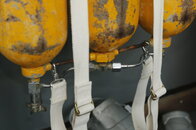CuriousRambler
Contributor
perhaps but I would think using surface supplied air would be a much safer bet if doing true zero visibility diving.
I don't disagree at all, but if I were playing devil's advocate, I can easily imagine a scenario where a diver might be stuck diving far enough away from vehicle access that hauling tanks to the water is enough headache, much less a compressor. Or small town nowhere, where there's simply no budget for equipment, and Old Bill is volunteering, using his personal equipment.
I think there are certainly *better* options, but they may not always be available.
Though if a new J valve is really $500, I imagine there's better ways to spend that money on safety haha







